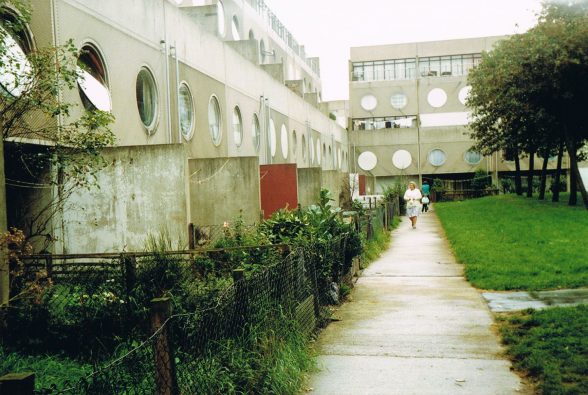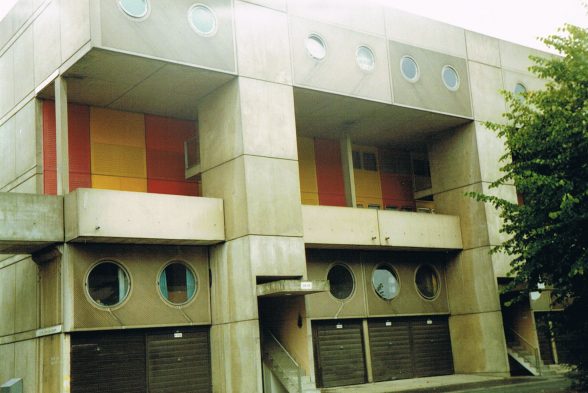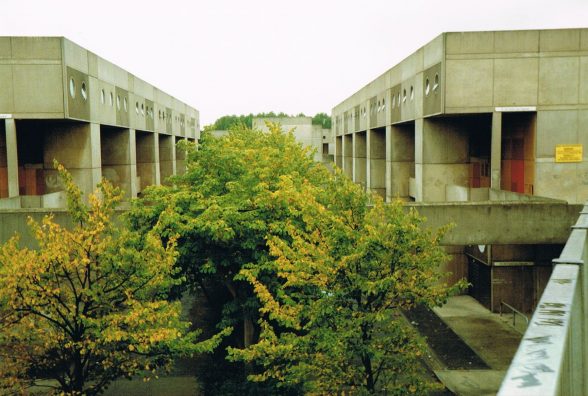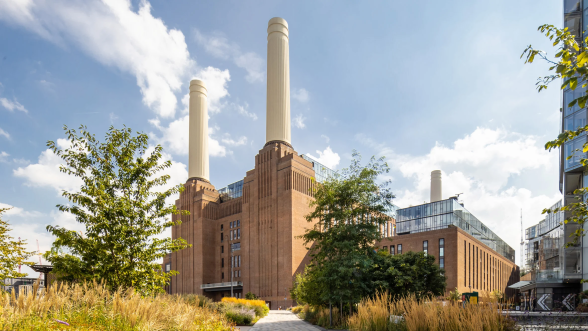CC BY-SA 3.0 Interesting to see The Daily Mirror picking up on a story in the Liverpool Echo about the “’Legoland’ estate which went from dream to nightmare in only 15 years”. Noted for its “strange ‘washing machine’ porthole...

CC BY-SA 3.0
Interesting to see The Daily Mirror picking up on a story in the Liverpool Echo about the “’Legoland’ estate which went from dream to nightmare in only 15 years”. Noted for its “strange ‘washing machine’ porthole windows,” this was James Stirling’s Southgate Estate in Runcorn New Town (Cheshire).
Both newspapers finish up saying “While Southgate may have been short lived, photos from this bold architectural project still prompt debate over the decision to eradicate such a striking housing development.” Wow—that feels almost enthusiastic, or am I getting over excited? Whereas once a ‘look back” piece like this would have been totally condemning of crazed architectural hubris, and scornfully disinterested in the historic context and the laudable ambitions of such a scheme, something seems to have shifted. Not least, the articles are illustrated period shots of the estate on completion, including attractive furnished interiors with contented-looking tenants in-situ. There are no images of graffiti or vandalism at all. Could this be evidence that a public beyond C20 supporters might be starting to regret the loss of some of the best examples of Britain’s post war architecture? I really hope so.

CC BY-SA 3.0
When it was demolished in the early 90s, The Architects Journal called Stirling’s Runcorn housing “Britain’s Pruitt-Igoe”. The estate had only been completed in 1977 and comprised 1,500 residential units intended to house 6,000 people. Pruitt-Igoe was the 1950s Minoru Yamasaki designed slab-block housing scheme in St Louis, Missouri, whose blowing-up in the 70s was declared by critic Charles Jencks to signal the death of modernism. The British version of this reputedly iconic moment was nearly two decades late, rather less dramatic (no dynamite), and complicated by the fact that “Big Jim” had by that point moved on from modernism/high tech to postmodernism. But his standing as a RIBA Medallist and Pritzker Prize-winner helped make the story, it would have been even better had his impending knighthood been announced already.
For a more in-depth analysis of Southgate, I strongly recommend Hugh Pearman’s article in Flaskbak, not least as this starts out with a gripping account of a case of flagrant indecent exposure in one of those big round windows. He concludes that Southgate was “a project on the cusp of different approaches – stylistically anticipating the postmodernism of the Italian school. while incorporating high-tech elements, and constructionally combining heavyweight and lightweight techniques” which makes it a thought-provoking contributor to a more holistic, and less stylistically siloed interpretation of what was going on in the 70s through 90s.
Pearman’s article is important, too, as he states that “With hindsight, it is clear that all [the problems] could have been put right with better management and judicious alteration. For instance it quickly became apparent that the central band of duplexes in the sandwich, lacking their own gardens and somewhat overshadowed by the projecting apartments above, were unpopular. Accordingly Stirling and Wilford changed the design significantly for the final phase, reverting to homes with gardens at ground level. But revising the earlier phases was a course of action that seems scarcely to have been considered.”

CC BY-SA 3.0
The recent coverage blames the failure on the standard Alice Colman-inspired diagnosis of “deck-access apartments making surveillance difficult which led to problems with criminality”, so not everything is changing, and some of the posted comments are classic “concrete monstrosity-type rants of which this, from “Georgian52”, is my favourite example:
“Absolutely hideous modern architecture. The millions spent on this grey dystopian blandness….It really infuriates me when people say how wonderful these 60s modern housing estates were. The[sic] is one in london [sic], literally the properties are falling apart but people still have to live in them. These brutalist estates never worked and only became breeding grounds for everything you don’t want living in next door. Architects who designed these estates would never have wanted to live in them, themselves so why should anybody else find them decent places to live.[N.B. no question mark here]”
And this one shows equal contempt for both architects and planners, but then rather sweetly contradicts itself: “The architect wanted his project approved at all costs so he came up with some rubbish about it being ‘inspired’ by the Georgian squares of Bath and Edinburgh and the town planners were stupid enough to be impressed by that. Actually, I lived there for almost two years and we had a great time – but it really wasn’t suitable for families.”
Clearly there is still plenty for C20 to be doing, but maybe the Daily Mirror for once brings some cause for cautious optimism?











